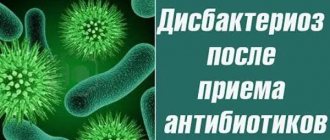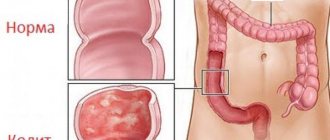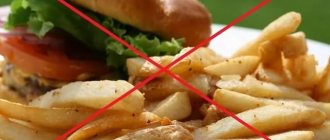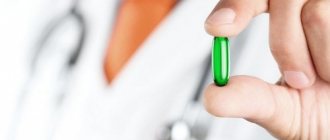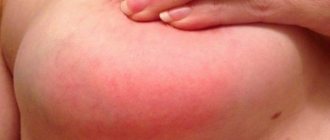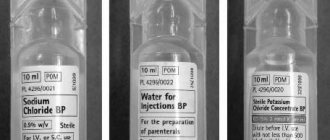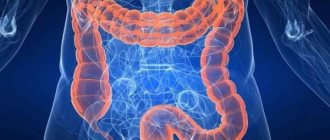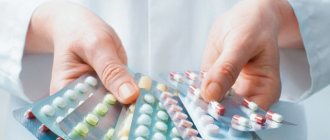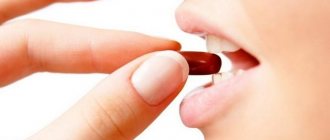Antibiotics, when taken for a long time, destroy the intestinal microflora. Even with a single dose, the correct balance is disrupted. In one full course, about 50% of microorganisms die.
It is very difficult to restore the intestinal microflora after antibiotics, so you need to take bifidobacteria from the beginning of antibiotic therapy and for at least 1-2 weeks after it ends.
Information about microflora
Microflora refers to a number of bacteria involved in ensuring the vital functions of the body. Most of the beneficial flora populates the intestines, the remaining third is distributed to the skin and organs of the genitourinary system.
The main tasks of microflora are:
- providing protection against viral and bacterial infections;
- cleaning from toxic secretions;
- control of water-electrolyte process, gas formation;
- production of hormones, vitamins;
- regulation of the absorption of nutrients.
The influence of antibacterial agents on the balance of microflora
The intestines are saturated with bifidobacteria and lactobacilli. The body needs them and is responsible for the proper functioning of the organ. Conditionally pathogenic environments include enterococci, Escherichia coli, and yeast-like fungi. When in normal balance, they do not pose a threat to humans.
Antibacterial drugs disrupt this harmony and lead to the destruction of both harmful and beneficial bacteria.
The most dangerous drugs are from the macrolide, quinoline, clindamycin, cephalosporin, and amino-penicillin series. Erythromycin has a less pronounced effect.
When taking antibiotics, the intestinal flora is destroyed. If left untreated, this leads to a decrease in immunity, disruption of the gastrointestinal tract, deterioration in the production of vitamins and hormones, and incomplete absorption of nutrients.
Can't do without them
Bacterial infections have been attacking humanity since time immemorial.
Pathogenic microorganisms have a detrimental effect on health, causing serious diseases. However, in the process of development of medicine, substances have been identified that destroy pathogenic cells - antibiotics. Whatever the attitude towards this group of drugs, without their help a person would hardly have coped with the plague, pneumonia or even a sore throat. Once in a sick body, antibacterial compounds:
- prevent the proliferation of pathogenic cells;
- destroy membrane walls;
- interfere with the normal functioning of systems (for example, protein production).
These 3 actions distinguish antibiotics. In addition, they are classified into bacteriostatic and bactericidal. The former temporarily stop the growth of pathogenic microflora, and the latter destroy the cells themselves.
Without knowing the mechanism of how an antibiotic works, a person cannot independently prescribe a suitable one. Only a doctor, having fully studied the medical history, will choose the one that will have the best effect on the body.
The first antibiotic, penicillin, was discovered by scientist Alexander Fleming. He found that spores of the mold Penicillium rubens are capable of killing similar bacterial cells. This is explained by increased competition among pathogenic microorganisms.
Why are they dangerous?
A wide list of side effects from taking antibacterial drugs:
- disruption of microflora and functioning of the gastrointestinal tract;
- disruptions in the functioning of the auditory and vestibular apparatus;
- pathologies of the heart and blood vessels;
- development of skin diseases;
- destructive effect on the nervous system;
- stopping the functioning of the respiratory system, etc.
Antibiotics have a detrimental effect on the body of a woman and the fetus during pregnancy. Taking such potent medications threatens the development of complications and pathologies in the unborn child.
But this is not all the consequences of treatment. Today it is no longer a secret that bacteria have begun to develop resistance to drugs, and this scares not only patients, but also doctors. A death from a superbug that has shown resistance to all groups of antibiotics has already been recorded. Fleming predicted a similar phenomenon when he discovered penicillin.
Microorganisms become resistant to antibiotics due to uncontrolled self-administration by patients. Today, the first step towards solving the problem has been taken - many pharmacies have been banned from selling such products without a doctor’s prescription.
Symptoms of microflora damage
The negative effects of antibiotics can manifest themselves in:
- The appearance of diarrhea.
- Bloating.
- Increased fatigue.
- Headaches.
- Apathy.
- Depression.
- Unpleasant sensations. Abdominal pain is usually localized in the lower part.
- Brittle hair and nails due to poor absorption of vitamins.
Normalization of microflora balance in children
The main symptoms of dysbiosis in children are pain and heaviness in the abdomen after taking the medicine. This is due to the fact that due to a lack of enzymes, food is poorly digested and not completely absorbed.
The remains begin to rot and cause flatulence and bloating. Then diarrhea and dehydration appear. You may experience bad breath, a putrid “aroma” of stool, remnants of undigested food in the stool, weakness, and drowsiness.
If you do not provide timely assistance to your child, the following may occur:
- stomatitis;
- thrush in girls;
- allergy to undigested protein;
- weakened immunity;
- avitaminosis.
In babies under one year of age, the intestines are sterile. The colonization of bifidobacteria and other flora begins during childbirth and continues during breastfeeding. Nevertheless, in infants the risk of dysbiosis is much higher, since full formation ends in about a year.
The disease usually manifests itself with severe crying, regurgitation, diarrhea, weight loss, and loss of appetite. When treating children, you should strictly follow the doctor's recommendations. But usually breast milk and the introduction of fermented milk products after reaching 6 months are sufficient.
Classification of drugs
Products that restore microflora come in the form of tablets, capsules, ready-made suspensions, powders for dilution, and drops.
A number of drugs are usually used in groups:
- Prebiotics . These drugs are only the basis for the “growth” of new flora. They cannot be digested. This group includes galactose, oligosaccharides, lactulose, inulin, and fructose isomers. Prebiotics are found in corn, onions, chicory, garlic, and wheat. Medical products include Duphalac, Lactusan, Normaze.
- Probiotics . These are complex products containing living beneficial bacteria. They help overcome pathogenic flora and normalize balance. There are known medicinal probiotics such as Bifidumbacterin, Lactobacterin.
- Symbiotics . They have a number of bacteria that contain probiotic and prebiotic properties. These include Bificol, Bifiform. Some medications have a combined composition with prebiotics, for example, Bifido-bak, Laminolact.
- Immunomodulators . Restore the body's protective functions. This is a tincture of lemongrass, echinacea, eleutherococcus, propolis extract.
Probiotics and prebiotics for the gut
These drugs consist of bacteria natural to the human body, which actively colonize the intestines after entering it. You can take medications from this group not only during the period of active restoration of the digestive tract, but also at the same time as antibiotics.
Bificol
You can take this medicine from as early as six months. For children, the dose should be selected by a pediatrician. Adults take Bificol for any intestinal disorders; it is not used for colitis. The dosage of the medication is 5 doses of the active substance in the morning and evening, in severe cases it is taken three times. The duration of treatment is 21 days.
Hilak Forte
The drug belongs to the class of prebiotics. Restores the intestinal mucosa and inhibits the growth of pathogenic bacteria. Accepted from the first days of life. From the age of 12, Hilak Forte is taken in a dose of 40-60 drops of suspension with a break of 5-8 hours. Treatment takes one month, the medication must be taken before meals, and should not be taken with milk.
Medicines for flora used after antibiotics
Medicines that support microflora are divided into types based on purpose and properties. Among probiotics, most of the bacteria contained do not reach their destination, so they are best administered using a probe or enema.
The following group tools are distinguished:
- Linux. In case of microflora disturbance, it provides the body with bifidobacteria and lactobacilli. The drug is multicomponent, supports the activity of the existing beneficial environment, preserving it and populating it with new microorganisms. Available in capsules. In adults, the drug is taken in its entirety; children are allowed to open the capsule and dissolve the powder in juice or water. The medication is prohibited for lactose intolerance.
- Bifidumbacterin. It comes in powder and capsules. An inexpensive and effective combination drug, prescribed when antibiotics are finished.
- RioFlora. Strengthens the immune system, increases the level of immunoglobulins A, supports flora, and prevents dysbacteriosis.
Prebiotics help to overcome the pathogenic microorganism even in the process of taking antibacterial agents.
The most effective means of the group:
- Hilak Forte. Inhibits the pathogenic environment, normalizes intestinal performance. Release form: drops. The medicine helps cope with constipation, diarrhea, bloating, flatulence, and reduces nausea. For children, the drug is diluted in water or juice.
- Duphalac and Normaze. The active ingredient is lactulose. The breakdown of this component occurs only in the lower parts of the digestive tract. The process leads to a decrease in acidity and the proliferation of beneficial bacteria.
You can drink synbiotics after or during a course of antibiotics:
- Bifiform. Contains bifidobacteria and enterococci. The medicine comes in capsule or powder form.
- Biovestin. Combined drug. Liquid emulsion helps improve digestion, digestion and absorption of nutrients, improves immunity, and participates in the synthesis of substances.
- Bifidoback. Dietary supplement with a number of microorganisms. Helps produce vitamins, participates in metabolic processes, stimulates the immune system. Produced in capsules.
- Multidophilus. Stimulates intestinal function. Contains lactobacilli and bifidobacteria.
- Acipol. Capsules are resistant to stomach acidity. It contains acidophilus lactobacilli and kefir grain strains. The product relieves food allergies, infections, and eliminates disorders. If taken along with antibiotics, thrush can be prevented.
Preparations based on spore-forming bacteria are also effective. This is explained by the fact that stomach acid does not affect them in any way.
Among these drugs:
- Sporobacterin;
- Biosporin.
Ways to restore intestinal microflora after antibiotic treatment
Restoring the microflora of the intestinal and gastric mucosa is an event inseparable from taking antibiotics. Without proper attention to this issue, the human body can undergo many unpleasant changes. Proper nutrition, giving up bad habits, eating special foods - all this must become part of the lifestyle after treatment with antibiotics. To speed up the recovery process, you need to see a gastroenterologist who will conduct individual therapy.
Maintain a healthy lifestyle
Giving up bad habits is the first thing a person should take care of. Cigarette smoke can severely irritate the gastric mucosa, and drinking alcohol after taking antibiotics is strictly prohibited. This is due to the fact that the drugs reduce the protective functions of the liver; the organ will not be able to quickly and efficiently process harmful substances that enter there. At the same time, it is advisable to devote time to physical exercise, which helps improve immunity, and it is important to provide the body with good rest.
Adjust your diet
Establishing a proper diet is an important step that helps speed up the process of the intestinal microflora returning to normal after taking antibiotics. Eating healthy, nutritious food will have a positive effect on the general condition of the human body and improve metabolism. What rules should you follow when maintaining proper nutrition to restore intestinal microflora:
- Avoid fatty, fried, heavy foods, which can worsen the symptoms of dysbiosis. Give preference to dietary products.
- If constipation is a concern if your microflora is disturbed, eat foods that have a laxative effect: freshly squeezed juices, bran, prunes, beets, oatmeal, fruits and vegetables.
- Avoid legumes, cabbage, grapes, pears, bread, and dairy products to avoid flatulence.
- Eat the following vegetables and fruits: boiled cauliflower, carrots, zucchini, baked apples.
- Make bone broths. This dish contains a beneficial substance - glutamine, which helps restore the liver.
Consume fermented milk products
In addition to a proper, balanced diet, fermented milk products help to significantly improve the condition of the intestinal microflora after taking antibiotics. These are kefir, feta cheese, whey, special kefir “Bifidok”, “Biokefir”, “Bifilife”, “Acidobifilin”, and “Actimel” products. Their use promotes accelerated cleansing of the intestine, increased lactation, and restoration processes of intestinal cells.
Take special enzyme medications
Preparations containing enzymes help improve the functioning of the digestive system, making it much easier to restore the intestinal microflora. These include Mezim Forte, Creon, Pancreatin, Duphalac. However, after taking antibiotics, you should not immediately run to the pharmacy to get them. It is necessary to consult with your doctor to prescribe the correct therapy.
- Flatulence in adults - causes and treatment of bloating
- Is it possible to eat pomegranate if you have diabetes?
- Laparoscopy - what kind of surgical method is it? When to perform diagnostic and surgical laparoscopy
Start taking probiotics and prebiotics
To restore the intestinal microflora, special dietary supplements in tablets containing probiotics or prebiotics have been developed. Depending on the composition, the effect of these drugs on the body varies. How do these two groups of drugs differ from each other and how do they affect the intestines after taking antibiotics:
- Probiotics (“Enterozermina”, “Bifi-form”, “Acilact”, “Linex”) contain bacteria that help maintain the normal state of microflora.
- Prebiotics (“Stimbifid”, “Lactusan”, “Prelax”) contain substances (special plant fibers) that stimulate the formation of their own bifidobacteria and lactobacilli in the intestinal tract.
Doctors usually prescribe probiotics for a long time. The intestinal microflora after taking antibiotics is restored in about six to eight months. Prebiotics are prescribed if there are enough bacteria in the intestinal tract, then the medications stimulate an increase in their number - the effect is noticeable after two weeks of use. Prebiotic agents are not prescribed in cases where the beneficial microflora is almost completely destroyed.
Preparations to prevent the persistence of microflora before taking antibiotics
To protect the microflora and prevent it from being destroyed when using antibacterial agents, it is recommended to start taking auxiliary drugs immediately or in advance. The course of treatment includes prebiotics, vitamins, and enterosorbents.
Of the prebiotics, Hilak Forte and Laktofiltrum are effective as prevention. These products, unlike probiotics, do not contain bacteria, but are soil and a stimulator for the growth of new flora.
Enterosorbents fight intoxication. The most popular: Smecta, Enterosgel, Polysorb.
Vitamin complexes help prevent decreased immunity, deterioration in the absorption of nutrients, and vitamin deficiency.
Probiotics should be taken after antibiotics and are not effective as a preventive measure. Diet for microflora
To normalize the microflora, in addition to taking medications, you also need to eat right. You should not overeat, you should eat often, but in small portions . Fasting days can be spent on an apple or kefir diet.
Maintaining a drinking regime is an equally important step; you should consume about 2 liters of liquid per day. The amount of salt must be reduced. Products need to be boiled or steamed.
Consumption is prohibited:
- canned food;
- fatty meat, broth, fish;
- ice cream;
- spices, smoked meats;
- muffins;
- confectionery products;
- mayonnaise;
- ketchup;
- alcohol;
- coffee;
- pearl barley, eggs, wheat;
- white bread;
- legumes;
- mushrooms;
- radish.
You can diversify your diet with fruits and vegetables rich in fiber, lean meat, kefir, fermented baked milk, yogurt, buckwheat, rolled oats, prunes, and honey.
Herbal preparations
After taking antibiotics, some herbs, in particular their infusions, help restore the flora:
- Calendula and St. John's wort. To prepare the tincture, mix St. John's wort and calendula in equal parts. Pour boiling water over 1 tablespoon and leave for 15-20 minutes. The finished broth is filtered and drunk 50-80 ml shortly before meals, 30 minutes. This drink has a bactericidal effect, suppresses pathogenic bacteria, stimulates the digestion process, and eliminates intoxication.
- Sage and plantain. To prepare the product, mix plantain and sage in equal proportions. Pour boiling water over the herb (1 liter will be enough) and cook for about 5 minutes. Strain and cool, take 50-60 ml three times a day half an hour before meals. The drug has an astringent, regenerating, bactericidal effect.
Symbiotics and eubiotics to restore microflora
Treatment will be 100% effective when traditional methods are successfully combined with medications. The selection of specific methods is decided by the doctor.
If there are severe problems with the digestive system, you must first adjust your diet. This will help you recover faster even with severe disorders of the gastrointestinal tract. Healthy foods have a positive effect on metabolism and intestinal motility. During the period of treatment and subsequent recovery, it is necessary to give preference to dietary foods, avoiding fried, fatty, salty, spicy and smoked foods.
If microflora disturbance is accompanied by prolonged constipation, food that has a mild laxative effect should be introduced. This includes beets, raisins, prunes, carrots, and sour milk. You should not eat gas-forming foods, which include beans, peas, cabbage, bread and pears of any kind.
These drugs are a combination of prebiotics and probiotics; eubiotics may contain chemical and biological substances that enhance the effects of microorganisms. They also suppress pathogenic microflora and restore the functioning of the gastrointestinal tract.
Bifidoback
The drug can only be taken by adults. Children take Bifidobact no earlier than 12-15 years of age after consultation with a doctor. A distinctive feature of the drug is that it must be taken with meals. The dose of the substance is one capsule up to three times a day. The exact duration of therapy is selected individually, it usually lasts 3-4 weeks.
Biovestin
The drug is an emulsion that must first be diluted in clean water or milk. It is better to take the product 30 minutes before the main meal. The dosage of Biovestin for patients over 12 years of age is 12 ml of the active substance. Treatment lasts 14-30 days, in some cases therapy is possible for 12 weeks.
Drug Festal
You can also take this enzyme during pregnancy and breastfeeding. For treatment, it is enough to take 1-2 tablets of the medication no more than three times a day. Higher doses of the active substance can only be prescribed by the attending physician. This usually occurs in the presence of not only dysbiosis, but also chronic pathologies of the digestive tract.
Enzistal
The drug contains the active substance pancreatitis and bovine bile extract. It is required to take the medication in the amount of 1-2 tablets also no more than three times a day. If there are additional problems with the functioning of the digestive tract, the amount of the active substance may be increased.
We invite you to familiarize yourself with the Best night creams after 40
Penzital
It is necessary to take the medication with meals in order to immediately protect the intestines and digestive tract from the harmful effects of antibiotics. The dose is equal to 1-2 Penzital tablets no more than three times a day. If necessary, the dosage is adjusted. Penzital is not chewed and washed down only with clean water. If taking antibiotics caused not only disturbances in the intestines, but also aggravated chronic pathologies of the gastrointestinal tract, taking enzyme preparations may take a longer time, up to several months.
These medications are aimed at removing dead pathogenic bacteria, traces of their activity, allergens and toxic substances from the body. Do not interfere with the effects of other groups of drugs.
Smecta
Smecta suspension. The drug provides quick results, allowing the patient to get rid of diarrhea, heartburn, nausea and vomiting. Adult patients should take Smecta 6 g of the active substance three times a day. The contents of the sachets are dissolved in 100-150 ml of water and immediately drunk along with the sediment. You can take Smecta for up to one week.
Enterosgel
It is recommended to take the product an hour or two before meals. A single dose of the drug is 1.5 tablespoons of the substance when taking the gel or one sachet per glass of water when preparing a suspension, and is drunk immediately. Three doses of Enterosgel are taken per day. The duration of therapy is individual for each patient, usually no more than a week.
We have already said that poor nutrition increases the risk of developing dysbiosis while taking antibiotics. So, what to do to avoid this:
- Drink more fluids. The volume should be increased to 3 liters. in a day. Alcohol is strictly prohibited!
- Eliminate some foods. Fatty, fried, smoked and anything that puts additional stress on the liver. You cannot eat beef and pork, sausages, mayonnaise and ketchup, mustard, sweets and butter.
- Include certain foods on the menu. Boiled and baked meat and fish, whole grain and bran bread, fruits, vegetables, soft-boiled eggs.
- Drink vitamins. Ask your doctor which complex is best for your body to drink during therapy.
Folk recipes
To speed up the restoration of flora while taking appropriate medications, you can resort to home methods to combat dysbiosis.
The most popular:
- A mixture of dried apricots, honey, prunes. All ingredients are combined in equal parts and stored in the refrigerator. Take 1 tablespoon of the product.
- Garlic with curdled milk. For 1 glass of drink you will need 2 cloves of garlic, which should be thoroughly chopped. Take the remedy before going to bed.
- Garlic tincture. 5 heads of garlic are crushed and the mixture is combined with a liter of olive or flaxseed oil. Leave in a dark place for three days. Drink 1 teaspoon of tincture daily on an empty stomach.
To get rid of bloating, folk remedies suggest dill water . To do this, pour 2 tablespoons of plant seeds into 250 ml of hot water and leave in a thermos for 2 hours. Drink a little every 10-15 minutes.
Home methods for treating dysbiosis
Due to lack of treatment, the pathology often develops into more severe forms.
Symptoms of dysbacteriosis 2 degrees:
- weakness, loss of strength, anemia;
- allergic manifestations (rash, itching, urticaria);
- severe diarrhea, flatulence, constipation;
- white coating on the tongue with a yellow tint;
- gastritis-like pain, heartburn, sour belching;
- loss of appetite, apathy.
We suggest you read: After sex, discharge and itching
Stage 3 is characterized by the appearance of specific green stool, chronic headaches, and severe symptoms of intoxication.
Treatment of the disease involves suppressing dangerous microflora, stimulating the growth of beneficial microorganisms and strengthening the immune system.
To restore the damaged microflora of a small child, pro- and prebiotics in liquid form are usually used. Therapy is carried out in courses.
In each case, the dosage and appropriate treatment regimen are chosen by the doctor. Most often prescribed:
- Narine (allowed from the 5th day of life);
- Bifiform Baby (prescribed from the first days to 2 years);
- Acipol (allowed from 3 months);
- Bifidumbacterin (used from 3 years of age);
- Bifidum-Multi-1 (also prescribed from 3 years of age).
Forget about self-medicating your child. Only a professional will determine the true cause of the ailment and select medications for therapy.
For a long time, antibiotics scared many adults. The negative consequences of taking it were scary, despite the fact that most people are treated very successfully. To minimize even the slightest risk of microflora damage, doctors recommend and prescribe special pre- and probiotic preparations to patients.
Such medications are used for mild disorders or in complex treatment with traditional drugs. They cannot have the desired effect if the patient does not adhere to the recommended diet.
Rosehip roots
A teaspoon of raw material is boiled for 10 minutes in 0.5 liters of water 150-200 ml an hour before meals three times a day for 1-2 weeks, improves immunity, relieves inflammation, improves motor skills
Chamomile
A tablespoon of raw material is poured with 200 ml of boiling water, keep 150-200 ml for 15 minutes an hour before meals three times a day for 1-2 weeks, increases immunity, relieves inflammation, improves motor skills
St. John's wort
A tablespoon of raw material is poured with 200 ml of boiling water, kept for 15 minutes, 150 ml an hour before meals three times a day for 5-7 days, increases immunity, relieves inflammation, improves motor skills
Oak bark
A teaspoon of raw material is brewed with 150 ml of boiling water, infused for 15 minutes, 150 ml in the morning and evening for 3-5 days, helps overcome diarrhea
A teaspoon of raw material is brewed with 150 ml of boiling water, left for 15 minutes, 150-300 ml of raw material is drunk in small sips throughout the day.
Treatment is usually continued until signs of microflora disturbance completely disappear. But to consolidate the results, you need to drink the product for another 2-3 days.
Tincture of sunflower and pumpkin seeds. Take 1 tbsp. spoon of sunflower and pumpkin seeds without peel, mix with 1 tbsp. spoon walnuts, grind in a blender. Pour boiling water over the resulting mixture and leave in a sealed container for at least 2 hours. Continue treatment with tincture for 10 days. The product must be taken 2 times a day.
Tea mushroom. Brew regular tea. Dilute it with warm water to make about 1 liter of liquid. Pour the tea solution over the mushroom. Leave it like this for 4 days. An adult should drink this unusual medicine on an empty stomach half an hour to an hour before meals. Those who took this miracle drink noted the rapid restoration of intestinal flora and acceleration of the digestion process.
A mixture of dried apricots, prunes and honey. Grind about 700 g of dried fruits through a meat grinder, add 150-200 g of honey to the pulp. Take 1 tbsp. spoon 1 time per day during the evening meal.
Garlic oil. Finely chop one head of garlic, pour in a glass of sunflower oil. Keep covered for 24 hours. It is difficult to drink such an infusion, so it is recommended to add it to ready-made dishes.
Kefir with garlic. Drink natural kefir every day with the addition of chopped garlic cloves a few hours before bedtime.
Honey with propolis. Pour the propolis into a bowl and melt in a water bath until it reaches the consistency of sour cream. Add honey, mix the resulting mixture in a glass of warm water. To restore balance in the intestines, the mixture must be taken for a week.
Pickled beets. Regular beets will help to effectively restore the intestinal microflora after antibiotics. It is taken together with marinade.
https://www.youtube.com/watch?v=0IgVLcjbyl4{amp}amp;modestbranding=0{amp}amp;controls=1{amp}amp;rel=0{amp}amp;showinfo=1{amp} amp;enablejsapi=1{amp}amp;origin=
Marinade base:
- 2 tbsp. spoons of apple cider vinegar;
- ½ teaspoon sugar, 1 teaspoon salt;
- 10 black peppercorns;
- 2 bay leaves;
- Dry clove buds;
- 1 liter of boiled water.
Pour the boiled and diluted marinade over the pieces of peeled beets. Once the solution has cooled, it should be taken orally before each meal.
Braga. Quite often, adults experience stomach pain, constipation and diarrhea after taking antibiotics. Braga will help regulate bowel function.
1 tbsp. Mix a spoonful of sugar with the same amount of honey. Dissolve the resulting mass in 500 g of warm water, add a few grams of yeast. Shake thoroughly and leave for two days. You need to drink mash throughout the day.
In the case of negative effects of antibiotics, it is better to use combination drugs that will not only stop diarrhea, but also kill painful microflora.
Enterofuril
Enterofuril in the form of a suspension. The drug contains nifuroxazide, which has a direct effect on painful microflora. Under the influence of the medication, diarrhea and bloating are eliminated, bacteria are not capable of further reproduction. For treatment, you need to take 0.2 g of the drug starting from the age of 14. 1.2 g of the component is taken per day. Duration of treatment according to indications.
Nifural
Nifural has a pronounced antimicrobial and antidiarrheal effect. It also has a pronounced antimicrobial and antidiarrheal effect. The drug contains nifuroxazide. Nifural is available in the form of suspension and tablets. When using the liquid form of the drug, from the age of six, take 5 ml of the active substance every 4-6 hours. Take 2 tablets every 4-6 hours. You can drink Nifural for up to one week.
Stopdiar
Fast-acting antimicrobial drug Stopdiar. A fast-acting antimicrobial drug that can stop diarrhea in the first day and protect against the harmful effects of pathogenic bacteria. You can take Stopdiar in the form of a suspension and tablets. When using the liquid form of the drug, from the age of six, take 5 ml of the active substance every 4-6 hours. Take 2 tablets every 4-6 hours. The course of treatment with Stopdiar does not exceed seven days.
It is especially important to follow preventive measures for people with chronic gastrointestinal problems, children and pregnant women. They are most susceptible to the negative effects of antibiotics and experience dysbiosis several times more often than other groups of patients. In order to reduce the likelihood of developing dysbiosis and its complications due to taking antibacterial agents, it is necessary to carefully monitor nutrition during the treatment period and support the gastrointestinal tract with special means.
Duration of full recovery
The duration of therapy varies from 2 weeks to several months. This mainly depends on the type of antibacterial agent, the condition of the patient’s gastrointestinal tract, the type of disease and its severity, and methods of therapy. Recovery occurs much faster if probiotics are administered immediately against the background of antibiotic use, and not after the end of the main therapy.
To stabilize the flora after taking antibiotics, a lot of products have been developed in the form of tablets, capsules, drops, and syrups.
You can start taking symbiotics and prebiotics earlier or together with antibacterial therapy, which helps prevent negative consequences. Probiotics are ineffective during this period . They are prescribed after the main course of treatment.
Only a doctor can choose the right remedy, based on the nature of the pathology, the severity of the disease, the patient’s age, and the individual characteristics of the body.
Benefits of probiotics
Probiotic preparations have a beneficial effect not only on the digestive organs - the entire body begins to function more harmoniously:
- the harmful effects of antibiotics on the walls of the stomach are reduced;
- enzymes, hormones and vitamins necessary for the normal functioning of the human body are produced;
- the negative impact of toxins is minimized;
- water-salt metabolism in the intestines is restored;
- the body's defenses are stimulated, its resistance to disease increases;
- the acidity level of the stomach and the entire digestive system is normalized, in which pathogenic bacteria die faster and beneficial bacteria multiply better;
- intestinal microbiocenosis is restored;
- the digestion process is stimulated;
- intestinal motility improves.
All this clearly proves that drinking probiotics to prevent antibiotic-associated diarrhea is simply necessary. Otherwise, the patient faces diarrhea or constipation, bloating, nausea and pain in the abdominal area.
Important! Microbiocenosis can recover on its own after antibiotic therapy is discontinued. However, this process is not fast and depends on the person’s immunity. Therefore, you should not neglect the advice of doctors and save on your health. It is better to take a course of probiotics so that after the main infectious disease you do not also have to treat dysbiosis.
